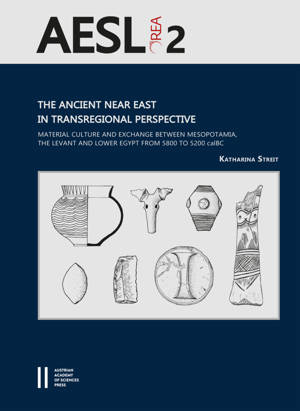
- Afhalen na 1 uur in een winkel met voorraad
- Gratis thuislevering in België vanaf € 30
- Ruim aanbod met 7 miljoen producten
- Afhalen na 1 uur in een winkel met voorraad
- Gratis thuislevering in België vanaf € 30
- Ruim aanbod met 7 miljoen producten
Zoeken
Omschrijving
In the late 1950s, Jacob Kaplan recognized the Wadi Rabah culture as a distinct cultural entity of the southern Levant, and suggested possible interconnections to the northern Levant, Mesopotamia, and Egypt. This volume examines Kaplan's suggestion in detail and explores the cultural entities of northern Mesopotamia, the Levant and Egypt between ca. 5800 and 5200 cal BC, and the interactions between them. In this process, the 6th millennium BC witnessed a densely woven network of trade and cultural interactions that formed the first known transregional cultural entity. This faded in the following period as its component regions reverted to cultural individuality, and was not seen again in this intensity until the Bronze Age. This examination crosses over modern political boundaries and different academic traditions, research emphases and methodologies. Based on a firm chronological framework, developed for each region based on Bayesian modeling of available radiocarbon dates, the main traits in settlement patterns, material culture, funerary rites, art, and subsistence strategies are outlined in order to analyze previously unnoticed parallels in material culture and cultural practice between the four regions systematically. Evidence of imported raw materials or finished goods is reviewed in detail, all of these collected links and interactions are discussed in a wider geographic context. Mechanisms that could underlie this interactions are examined and possible transregional dynamics are proposed. It is suggested that the center of the culture that influenced the region lays in the northern Levant and northern Mesopotamia.
Specificaties
Betrokkenen
- Auteur(s):
- Uitgeverij:
Inhoud
- Aantal bladzijden:
- 337
- Taal:
- Duits
- Reeks:
- Reeksnummer:
- nr. 2
Eigenschappen
- Productcode (EAN):
- 9783700183969
- Verschijningsdatum:
- 10/11/2020
- Uitvoering:
- Hardcover
- Formaat:
- Genaaid
- Afmetingen:
- 213 mm x 302 mm
- Gewicht:
- 1474 g

Alleen bij Standaard Boekhandel
+ 559 punten op je klantenkaart van Standaard Boekhandel
Beoordelingen
We publiceren alleen reviews die voldoen aan de voorwaarden voor reviews. Bekijk onze voorwaarden voor reviews.








